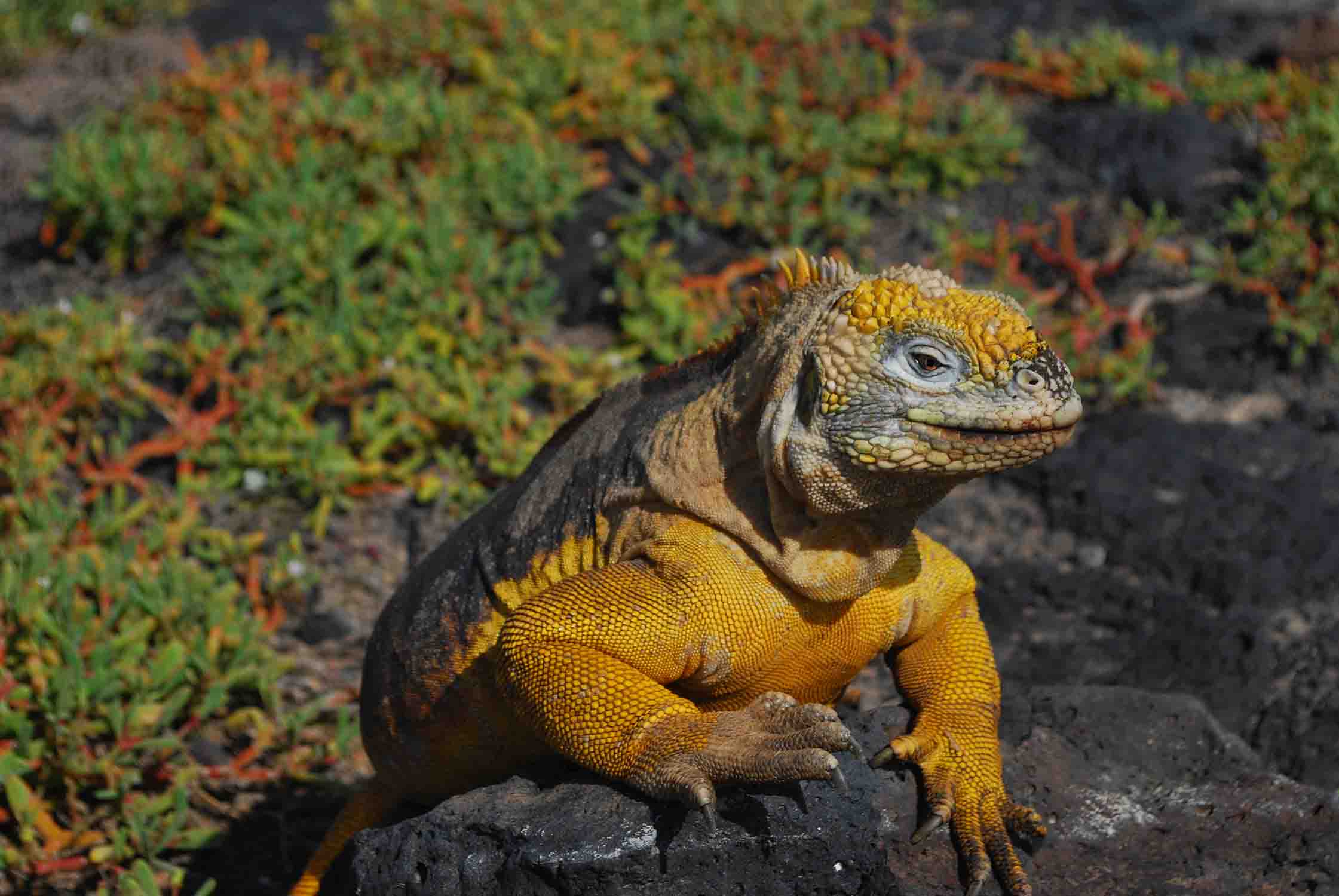On Santiago Island, the Galapagos Land Iguana has made a comeback. Conservationists believe the species is on the verge of being reintroduced.
A Galapagos Island species of iguana went extinct 200 years ago. However, it appears that they are making a comeback with the support of conservationists.
Charles Darwin was the last person who saw a Galapagos land Iguana in Santiago Island, Ecuador in 1835. In 1906, an expedition team from California discovered that the iguanas had disappeared.
Although this type of iguana may still be found on Galapagos Islands' other Galapagos Islands Islands, it is thought to have disappeared from Santiago in the past 187 year -- up until now.
In late July, a team of scientists and park rangers found new lizards. This indicates that the species was successfully reintroduced. Jorge Carrion is the director of conservation for the Galapagos Conservancy. He says the ecosystem has thriving results.
He said that evidence is found in the small details. It is possible to see lizards of different ages, and even unmarked specimens, which indicates that the iguanas breed in their natural environment.
Carrion previously worked at the Galapagos National Park Directorate before joining the Galapagos Conservancy. This is the organization responsible for protecting the islands' resources and ecosystems. The GNPD is the authority responsible for the iguana reintroduction effort, and receives funding and assistance through the Conservancy.
He claimed that more than 3,000 land-iguanas have been released on the island by the collaborative since January 2019.
The Galapagos Legend visits Santiago island on it's 5 day Galapagos west island cruise , you can also consider our 8 day Galapagos tour that visits both north and weste sides of the archipelago.
After careful consideration of how the return of this species would impact the ecosystem, conservationists decided to reintroduce land iguana. These lizards can be described as an engineering species (like the Galapagos giant turtle) because they play an important role in maintaining an ecosystem in balance.
Carrion explained that land iguanas (and tortoises) are the primary herbivores of the Galapagos Islands. They spread seeds all over the landscape and help create plant communities. Other animals can also benefit from their movements.

Carrion stated, "This type of species are crucial for ecosystem in general." "In this particular case, it was justification for the reintroduction land iguanas in order to [return] Santiago Island’s natural dynamic. The ecosystem is affected by many imbalances when engineers species are absent.
Officials are closely monitoring the iguanas. They have inspected the population to see if there are any new lizards.
What is the cause of the extinction of the iguanas?
It is believed that the Galapagos land-iguanas were decimated by invasive species such as feral pigs. These unwanted animals were brought to Santiago by whalers or other mariners. They destroyed plants and ate iguanas, causing havoc to the ecosystem.
Scientists had to remove all non-native species from the island before the iguanas were allowed to be reintroduced. This was done through Project Isabela of the Galapagos Conservancy, which was completed on 2006
Carrion and his colleagues believed they had learned an important lesson by reintroducing the land iguanas. They believe the ecosystem can recover if the source of ecological disturbance is removed (in this case, the invasive species).
The National Park Directorate as well as the Galapagos Conservancy have joined forces to restore the giant tortoise from another island. According to the Galapagos Conservancy and National Park Directorate, the Floreana Island native tortoise is extinct since the 1800s. Breeding and reintroduction efforts began in 2017.
Galapagos Islands is home to some of most remarkable animals and plants. According to the Conservancy Darwin's 1835 expedition, which resulted in his theory of evolution through natural selection, made these islands famous.